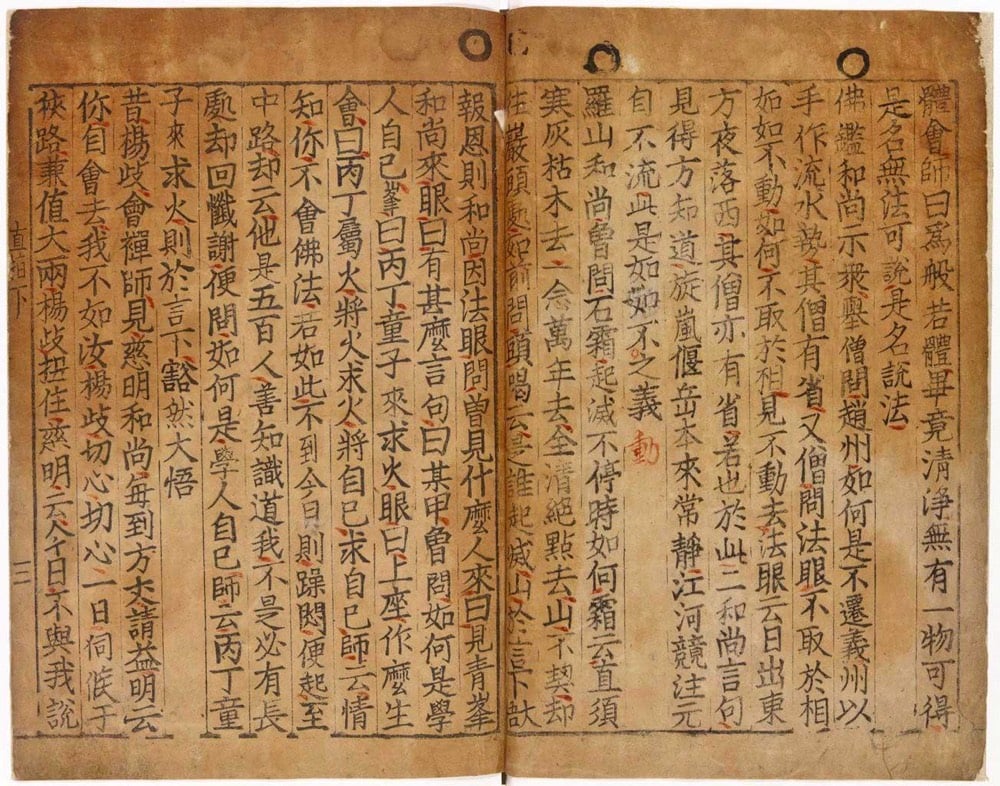The Korean Invention of the Printing Press, Almost 200 Years Before Gutenberg

M. Sophia Newman writing for Literary Hub: So, Gutenberg Didn’t Actually Invent the Printing Press.
It is important to recognize what this means. The innovation that Johannes Gutenberg is said to have created was small metal pieces with raised backwards letters, arranged in a frame, coated with ink, and pressed to a piece of paper, which allowed books to be printed more quickly. But Choe Yun-ui did that — and he did it 150 years before Gutenberg was even born.
This piece is also a good reminder that the spread of technology (and culture) depends on more than just how useful it is.
However, Korea’s printed books did not spread at a rapid pace, as Gutenberg’s books would 200 years later. Notably, Korea was under invasion, which hampered their ability to disseminate their innovation. In addition, Korean writing, then based closely on Chinese, used a large number of different characters, which made creating the metal pieces and assembling them into pages a slow process. Most importantly, Goryeo rulers intended most of its printing projects for the use of the nobility alone.
The image at the top of the post is of Jikji, the oldest existing book printed with movable metal type, made in 1377.





Stay Connected